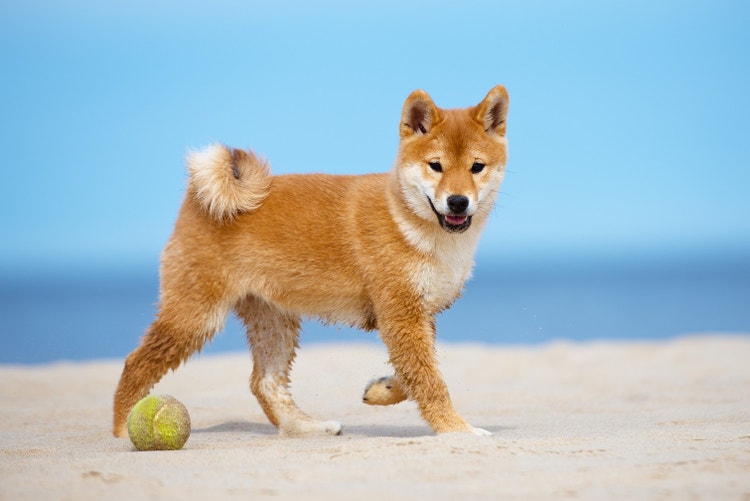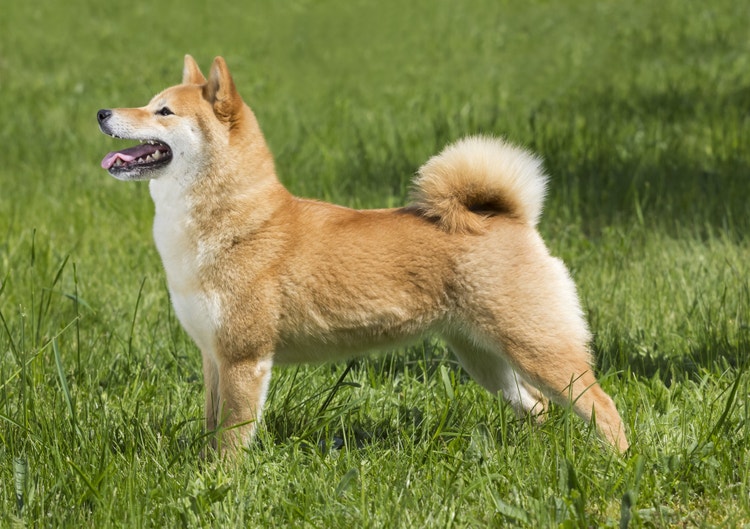
Shiba Inu


Where Did Shiba Inu Get Their Name?
There are many theories on how the Shiba Inu acquired its name. The first is that shiba means “small” in Japanese and the Shiba Inu is the smallest and most ancient of Japan’s dogs, being around for nearly 3,000 years. Another is that the breed was named for their unique ability to maneuver through brushwood bushes, as they are also referred to as Little Brushwood Dogs. Either way, they officially acquired their current moniker in 1920.
The ancestors of the modern day Shiba Inu were originally from Japan’s mountainous regions and had a larger boned and harsh-looking appearance. Their strong prey drive makes them magnificent hunters of small game and they are even capable of hunting larger game, including boar, deer, and bears. They are also outstanding watchdogs.
The Cultural Properties Act of 1936 gave official recognition to the Shiba Inu as a “precious natural product” of Japan. The population of Shiba’s dwindled during World War II and today’s Shiba is the result of the interbreeding from 3 different bloodlines (the Sanin Shiba, the Mino Shiba, and the Shin Shu Shiba) to preserve the breed. The Shin Shu Shiba is the most popular of the 3 bloodlines. In 1954, America saw its first Shiba Inu, since a military family brought their pet dog home from Japan. The Shiba was officially imported from Japan to the U.S. in the 1970s for breeding, with the first litter being born in 1979 to Julia Cadwell’s sire and dam. The Shiba Inu remains the top companion dog throughout Japan, and was officially recognized in 1992 by the American Kennel Club.
Caring for a Shiba Inu
Shiba Inu Nutrition
Shiba Inu Nutrition
The Shiba Inu is a very active dog with a strong prey drive. They were bred for their agility and hunting ability, so they may require a higher caloric intake than a more sedentary breed. Shiba are meant to be trim to maintain their quickness.
How Often Should I Groom My Shiba Inu?
How Often Should I Groom My Shiba Inu?
The Shiba Inu’s thick double coat requires routine brushing (2 times monthly) with a rake-style brush. They shed twice yearly, in the spring and fall, and will require more frequent brushing during these seasons. Shiba should be bathed as needed.
Do Shiba Inu Have Health Issues?
Do Shiba Inu Have Health Issues?
Shiba are generally healthy dogs, but are predisposed to a few health issues. Their thick coat makes them ideal for cooler temperatures and excessive exercise in warmer temperatures should be avoided. This Northern breed should be kept in the air conditioning (with plenty of activities to keep them occupied) while in warmer climates. As a small, agile dog, the Shiba is prone to orthopedic issues like hip dysplasia and luxating patellas. They are also prone to ocular diseases including progressive retinal atrophy, entropion, and cataracts. Routine orthopedic and eye examinations by a veterinarian are recommended to catch any health concerns early. Other diseases associated with the Shiba are hypothyroidism and Von Willebrand’s disease. Routine blood work can screen for these diseases. Their life span is 12 – 14 years.
Shiba are predisposed to: progressive retinal atrophy, entropion, hypothyroidism, cataracts, patellar luxation, hip dysplasia, and Von Willebrand’s disease.
How Do You Train a Shiba Inu?
How Do You Train a Shiba Inu?
The Shiba Inu is a very independent, stubborn breed. They do not take well to strangers or other dogs and proper training is recommended in the early stages of life. Because of their strong-willed nature, earning their respect early on is crucial to securing their loyalty and affection for years to come. This is achieved by firm and consistent training methods using positive reinforcement. Patience is essential when training a Shiba, as this head-strong breed may inspire frustration. Sticking with training will ensure a well-mannered pet. Shiba are not typically friendly with other animals, so use caution if training with other dogs. A leash is a must when walking, as they are swift and will likely chase any animal they deem as prey. Introducing your Shiba Inu to humans and other dogs at a very early age can help with socialization. When properly trained, the Shiba can be a wonderful companion and excellent watchdog for the entire family.
How Much Exercise Does a Shiba Inu Need?
How Much Exercise Does a Shiba Inu Need?
Being a natural hunter with a strong prey drive, the Shiba Inu requires routine exercise and play. The independent Shiba can also be perfectly content playing alone, but make sure they have a variety of toys at their disposal to keep them occupied. Because of their double coat, use extreme caution when exercising in warmer climes. Always provide access to water and monitor breathing while outside. The Shiba thrives in cold climates and loves being outdoors. Running and agility are what Shiba are know for, so they will make an excellent jogging partner.
What Are the Traits of a Shiba Inu?
Shiba Inu Facts
Other Breeds to Explore
References
- Morris, Desmond. Dogs: The Ultimate Dictionary of Over 1,000 Dog Breeds. Trafalgar Square, 2002.
- American Kennel Club. The Complete Dog Book. Random House Digital, Inc., 2006.
- Wilcox, Bonnie and Chris Walkowicz. The Atlas of Dog Breeds of the World. T.F.H. Publications, Inc., 1995.


